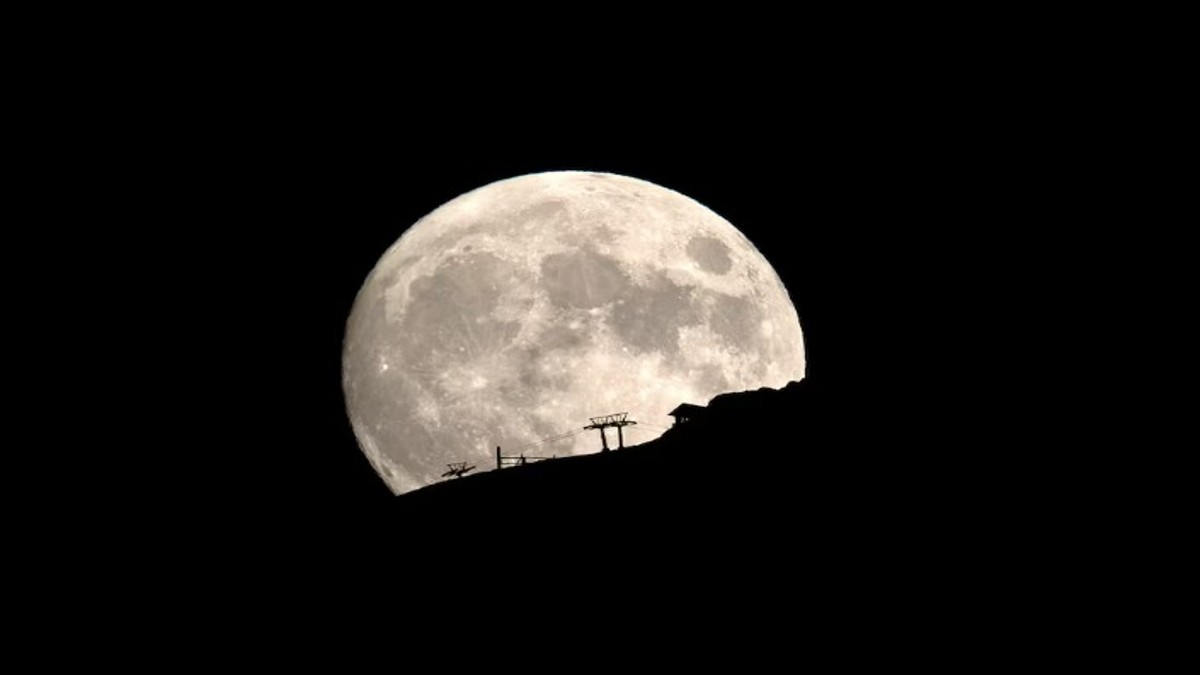The Moon is all set to get its own time reference system.
The White House sent a memo to NASA on Tuesday asking the space agency to establish a unified standard of time for the Moon and other celestial bodies.
The development comes as the United States aims to set international norms in space amid a growing lunar race among nations and private companies.
The head of the White House Office of Science and Technology Policy (OSTP), according to a memo seen by Reuters, instructed the space agency to work with other parts of the US government to devise a plan by the end of 2026 for setting what it called a Coordinated Lunar Time (LTC).
Let’s take a closer look.
What is LTC?
Time on the Moon is slightly faster than on Earth, averaging 58.7 microseconds each day, due to the absence of gravity, according to OSTP chief Arati Prabhakar’s memo cited by Reuters.
The LTC would provide a time-keeping benchmark for lunar spacecraft and satellites that require extreme precision for their missions.
“An atomic clock on the moon will tick at a different rate than a clock on Earth. It makes sense that when you go to another body, like the Moon or Mars that each one gets its own heartbeat,” Kevin Coggins, NASA’s top communications and navigation official, told the New York Post.
While others may not think much of a few hours’ difference in time, when high-tech systems interact, microseconds matter.
“US leadership in defining a suitable standard - one that achieves the accuracy and resilience required for operating in the challenging lunar environment - will benefit all spacefaring nations,” the OSTP memo stated.
Impact Shorts
More ShortsHow will it help astronauts?
Establishing a lunar time standard is crucial since a number of nations intend to deploy astronauts to the moon in the second half of 2020.
According to Reuters, under its Artemis programme, NASA is aiming to send astronaut missions to the moon in the coming years and establish a scientific lunar base that could help set the stage for future missions to Mars. Dozens of companies, spacecraft and countries are involved in the effort.
China said last year it aims to put its first astronauts on the moon by 2030. Japan in January became the fifth country to put a spacecraft on the moon. India last year became the first country to land a spacecraft near the unexplored lunar south pole, and it has announced plans to send an astronaut to the moon by 2040.
An OSTP official said that without a unified lunar time standard it would be challenging to ensure that data transfers between spacecraft are secure and that communications between Earth, lunar satellites, bases and astronauts are synchronised.
Discrepancies in time also could lead to errors in mapping and locating positions on or orbiting the moon, the official said.
The official also said that as commercial activities expand to the moon, a unified time standard would be essential for coordinating operations, ensuring the reliability of transactions and managing the logistics of lunar commerce.
NASA will, however, face challenges in establishing a single time standard on the moon since this would necessitate global cooperation and agreement on the mathematics and science of timekeeping.
The fact that more than 30 nations, including India, have already signed up for Artemis is to NASA’s advantage. The two main rivals of the US in space, China and Russia, are yet to sign the Artemis Accords.
What’s the difference between a time standard and a time zone?
A time standard is a set of rules that define the time units (such as seconds, minutes, and hours) and serve as a point of reference for timekeeping. It is used to measure time intervals. The guidelines for modifying clocks to adjust for leap years and leap seconds to maintain accuracy are established by time standards.
Time zones and time standards are not the same thing. A time zone is an area of the planet that follows the same standard time. Time zones are roughly defined by lines of longitude and are based on the rotation of the Earth.
On Earth, most clocks and time zones are based on Coordinated Universal Time, or UTC. This internationally recognised standard relies on a vast global network of atomic clocks placed in different locations around the world. They measure changes in the state of atoms and generate an average that ultimately makes up a precise time.
With inputs from Reuters
)